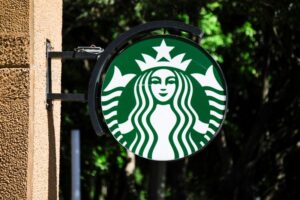Starbucks Accelerates Service Model Rollout: Aiming for Enhanced Customer Experience
In a significant update, Starbucks CEO Brian Niccol recently confirmed that the company is fast-tracking its new staffing and service model across all North American company-owned locations—over 11,000 stores—by the end of summer. This ambitious pivot comes rather than the previously planned rollout to just a third of U.S. locations by fiscal year-end.
Niccol’s initiative, known as the Green Apron model, is at the heart of a broader turnaround strategy aimed at restoring sales growth that has stagnated in recent quarters. The focus here is clear: to enhance the in-store customer experience. This shift reflects a strategic move away from the increasing reliance on mobile and takeaway orders, which has affected the traditional coffeehouse vibe Starbucks originally championed.
Innovative Solutions for Improved Service
The Green Apron model introduces a range of in-store technologies designed to streamline order sequencing and improve efficiency. One notable feature includes a dedicated barista specifically for drive-through orders, which has already shown promising results. During initial testing across 700 stores, Starbucks reported expedited service times and increased sales figures, though specific numbers were not disclosed. Niccol enthusiastically noted, “We’ve learned, and now we know what we need to do, so let’s scale it.”
Amid these changes, the target for baristas is ambitious: delivering customer orders within a four-minute window. This objective ties directly into Niccol’s mission to bring Starbucks back to its coffeehouse roots—a movement aptly dubbed “Back to Starbucks.”
What’s Next for Investors?
While the company has not shared specific financial metrics regarding the deployment costs of the Green Apron model, Niccol emphasized that investors should focus on in-store performance metrics instead of traditional earnings-per-share figures during this transitional phase. He reassured stakeholders that the impact on earnings would be temporary, shedding light on a forward-thinking strategy focused on customer experience over immediate financial outputs.
In recent discussions, analysts have raised concerns about the timeline for Niccol’s turnaround strategy, especially in relation to the company’s stock performance. Over the past five years, Starbucks shares have increased by only 11%, contrasting sharply with the S&P 500’s impressive 88% rise. TD Cowen recently downgraded Starbucks from "buy" to "hold," citing skepticism about how long the turnaround would truly take.
As we look toward the future, Starbucks is set to hold an investor day in 2026, which may provide clearer insights into its long-term strategy and outcomes.
Conclusion: A Step Toward Reinvigoration
Starbucks is making notable strides in redefining the in-store coffee experience through strategic staffing and customer service enhancements. As the company navigates this intricate transition, investors and coffee aficionados alike will be keenly watching the steps taken to revitalize a beloved brand. With innovative solutions on the horizon and a committed leadership team, Starbucks aims to reclaim its position at the forefront of the coffeehouse industry. Stay tuned for more updates as this story unfolds at Extreme Investor Network.

